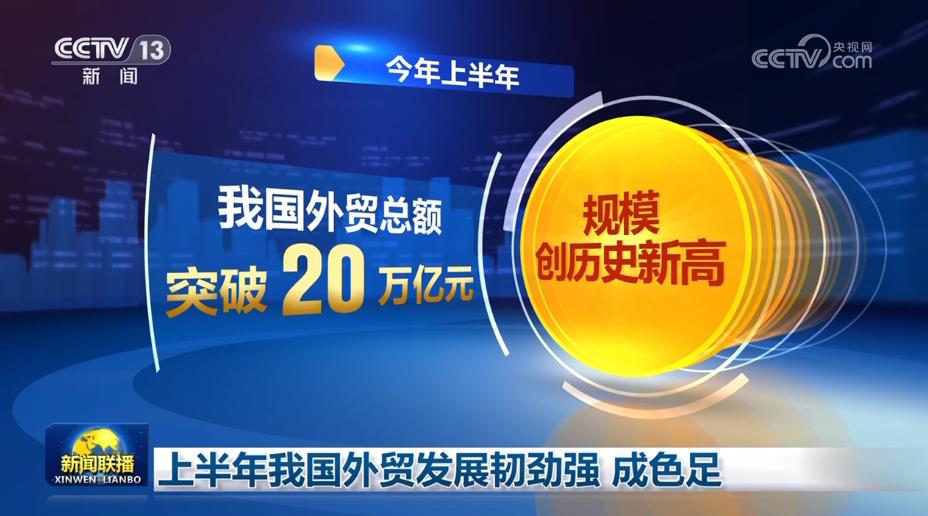In the first half of the year, China’s foreign trade development was tough and full of color.
Cctv news(News Network): In the first half of this year, under the background of great external demand pressure on exports, China’s foreign trade withstood the pressure, stabilized the scale, improved the quality, and showed toughness and new color.
Recently, about 3,000 containers of China-made textiles, glass products, machinery and equipment were sent to Mexico, Colombia, Peru and other emerging markets through the newly opened South American route of Qingdao Port.

Routes continue to be encrypted, and China now has as many as 214 trading partners. In the first half of this year, China’s total foreign trade exceeded 20 trillion yuan, reaching a record high. ASEAN continued to be China’s largest trading partner, and China’s import and export to countries along the Belt and Road increased by nearly double digits.

Although the growth of global goods volume has slowed down, China’s foreign trade entities are actively exploring new demands in the global market. Cross-border e-commerce data shows that summer home appliances produced in Shenzhen, Dongguan and Ningbo are selling well all over the world this year, and energy-saving and environmental protection products such as energy storage fans and charging piles are especially favored by overseas buyers. In the first half of this year, China’s exports of mechanical and electrical products accounted for nearly 60% of the total export value.

Private enterprises are becoming the main force of China’s foreign trade development. In the first half of this year, the import and export of private enterprises accounted for 52.7% of China’s total import and export value, up 3.3 percentage points year-on-year. The "new three kinds" of foreign trade, that is, electric vehicles, lithium batteries and solar cells, accelerated to the sea, with a total export growth of 61.6%. New formats and new models are booming, and the number of cross-border e-commerce entities in China has exceeded 100,000. In the first half of the year, the import and export of cross-border e-commerce increased by 16% year-on-year.